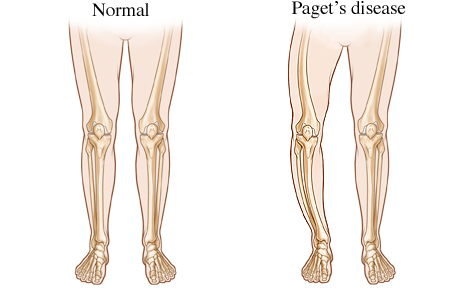Thoughts on Lower back pain and its prevention.
Lower back discomfort is a common condition. Most people will encounter it at some point in their lives. Lower back pain is the most typical handicap in the world and the most typical reason for missed work, according to a 2020 study.
The majority of lower back pain is brought on by an injury. Additionally, some medical disorders may be the cause. Most persons experience back discomfort for the first time between the ages of 30 and 50 (Reliable Source). This is partially caused by how the body changes as we get older.

The amount of fluid between your spine’s vertebrae decreases with age. As a result, spinal discs are more susceptible to irritation. Additionally, you lose some muscular tone, which increases the risk of back pain to injury.
This is why utilising proper body mechanics and building up your back muscles can help prevent lower back pain.
Lower back pain symptoms
There are several potential reasons of lower back pain, and these causes can produce a wide range of symptoms.
Among the most typical signs are:
- ache after extended periods of relaxation or sitting
- suffering when bending over or lifting something heavy
- hip or gluteal pain that radiates
- stiffness after initially waking up or after a period of idleness
- weakness or numbness
Other, less prevalent but more severe symptoms exist. They consist of:
- Back discomfort, as well as leg or foot pain
- unintended loss of weight
- fever
- inadequate bowel control
If you suffer severe symptoms or your back discomfort persists for more than 72 hours, see a doctor.
Lower back pain causes
Lower back discomfort can have a variety of common reasons, such as underlying chronic illnesses.
Sprained or strained muscles
Excessive activity can stretch or damage the back’s muscles and ligaments. Sprains and strains can also be brought on by abrupt movements.
Lower back stiffness and soreness, as well as muscular spasms, are symptoms.
Herniated disc
Back disc injuries are common, and the risk gets worse as you get older. The discs’ outer layers may rip or herniate.
A slipped or ruptured disc is another name for a herniated disc. It happens when the disc’s cartilage presses up against the spinal cord or nerve roots. The cushion between the spinal vertebrae stretches beyond where it normally sits. Once a result, as the nerve root leaves the spinal cord and vertebrae, it may become compressed.
Trauma and aging-related degenerative changes are examples of potential causes. Herniated disc discomfort often lasts up to six weeks without therapy.
Sciatica
Legs and spine are connected via the sciatic nerve.
Sciatica can happen if a herniated disc squeezes the sciatic nerve. Leg or foot pain from sciatica may feel like pins and needles or burning.
Spinal stenosis
Your spine’s gaps narrow as a result of spinal stenosis, placing pressure on the spinal cord and spinal nerves. In many cases, deterioration of the discs between the vertebrae is linked to spinal stenosis. As a result, soft tissues like discs or bony spurs might compress the spinal cord or nerve roots.
Symptoms of pressure on the spinal nerves include:
- numbness
- weakness
- cramping
These signs could appear anywhere on your body. Many persons with spinal stenosis find that standing or moving about makes their symptoms worse.
Unusual curves in the spine
The following conditions can result in atypical spine curves:
- scoliosis
- lordosis
- kyphosis
These ailments are frequently present at birth and are typically identified for the first time in childhood or adolescence. The unique curve puts pressure on the following areas, which can lead to discomfort and bad posture:
- muscles
- tendons
- ligaments
- vertebrae
Some individuals, though, might not exhibit any symptoms.
Other circumstances
Other health issues can also result in lower back pain. They frequently come with other symptoms. They consist of the following ailments, which are all connected to musculoskeletal pain:
- Arthritis: Joint inflammation is referred to as arthritis.
- fibromyalgia: Long-lasting pain and sensitivity in the muscles, tendons, and joints is known as fibromyalgia.
- Spondylitis: Inflammation is brought on by the autoimmune condition spondylitis. It is an instance of arthritis.
- Spondylosis: Another type of arthritis is spondylosis. The loss of typical spinal structure and function could result from this degenerative condition.
Although ageing is the main factor, each person will experience degradation in different places and at different rates. The following medical disorders can also result in lower back pain:
- issues with the kidneys and bladder, including kidney infections
- pregnancy
- endometriosis
- ovarian polyps
- Uterine tumours
- misaligned spinal cord
- spinal abscesses
- cancer, such as spinal cord cancer
How common is lower back pain?
Most people have lower back discomfort at some point in their lives—roughly four out of five people. It ranks among the top causes for people to seek medical attention.
Lower back discomfort is more common in certain persons than others. the following are risk factors for lower back pain:
- Age: Back discomfort is more common in people over 30. Disks, the supple, rubbery tissue that supports the spine’s bones, deteriorate over time. Pain and stiffness may develop as the discs deteriorate and lose their strength.
- Weight: Back discomfort is more common in people who are overweight, obese, or carry additional weight. Overweight people exert pressure on their discs and joints.
- Overall health: Back strains and sprains can result from weak abdominal muscles that are unable to support the spine. Back discomfort is more common in people who smoke, drink too much alcohol, or lead sedentary lifestyles.
- Work and lifestyle: Back injuries are more likely to occur in occupations and activities that involve heavy lifting or bending.
- Structural issues: Conditions like scoliosis that alter the position of the spine can cause severe back pain.
- Disease: Low back pain is more common in those with a family history of osteoarthritis, certain cancers, and other illnesses.
- Mental health: Back pain can be brought on by worry and sadness.
REFERENCES:
- https://www.webmd.com/back-pain/ss/slideshow-low-back-pain-overview
- https://www.healthline.com/health/low-back-pain-acute
- https://my.clevelandclinic.org/health/diseases/7936-lower-back-pain
- https://www.mayoclinic.org/diseases-conditions/back-pain/symptoms-causes/syc-20369906
For more details, kindly visit below.


